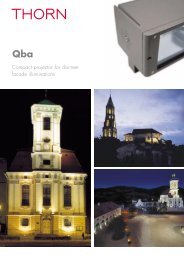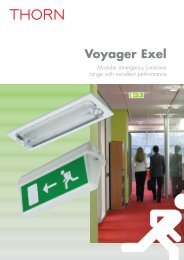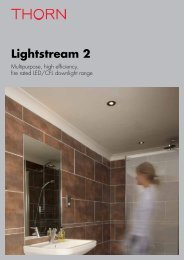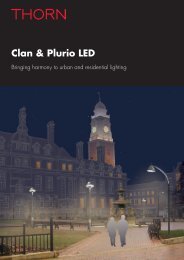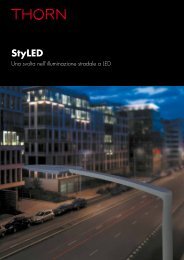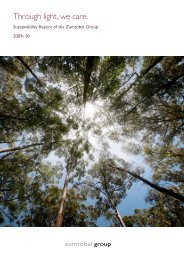Champion - THORN Lighting
Champion - THORN Lighting
Champion - THORN Lighting
Create successful ePaper yourself
Turn your PDF publications into a flip-book with our unique Google optimized e-Paper software.
Players, adjudicators and<br />
spectators of sport need good<br />
levels of lighting to ensure that<br />
neither performance nor the<br />
ability to follow the match<br />
is impaired.<br />
09<br />
<strong>Champion</strong> for sport<br />
The exact lighting requirements<br />
of an installation are dependent<br />
upon the sport to be played and<br />
the competitive level. The higher<br />
the level of competition, the<br />
greater the requirements will be.<br />
The requirements will also be<br />
higher for those sports where<br />
the visual information itself is<br />
more difficult to process.<br />
For example, the lighting of<br />
football terrains generally require<br />
lower levels of illuminance and<br />
uniformity than hockey terrains,<br />
where the ball is smaller and<br />
travels at greater speeds.<br />
Illuminance and Uniformity<br />
The lighting level (illuminance)<br />
of an installation obviously<br />
needs to be sufficient for the<br />
participants to effectively process<br />
the visual information of what<br />
is happening on the pitch<br />
(movement of people, balls etc).<br />
Equally important is the<br />
uniformity of this illuminance.<br />
If there are parts of the pitch that<br />
are quite dark in comparison to<br />
its immediate surrounds, this will<br />
impair the effective processing of<br />
the visual information, even if the<br />
average illuminance of the total<br />
pitch is acceptable.<br />
Imagine how difficult it would be<br />
to follow a hockey ball moving at<br />
high speeds in and out of dark<br />
patches on the ground.<br />
Colour appearance<br />
and rendering of light<br />
The colour appearance of<br />
the light, as well as the colour<br />
rendering properties (the<br />
degree to which colours are<br />
truly represented by the light)<br />
also help with the processing of<br />
visual information. The use of<br />
white light sources such as Metal<br />
Halide lamps is an effective way<br />
of enabling this, although<br />
‘yellow’ sources such as High<br />
Pressure Sodium are often<br />
sufficient for lower levels of<br />
competitive activity.<br />
Glare control<br />
Bright sources (floodlights) visible<br />
against a dark background (the<br />
night sky) can cause discomfort<br />
and disability glare if the light is<br />
not correctly controlled and<br />
focussed on the target area (the<br />
pitch). The control of glare<br />
requires excellent inherent optical<br />
control and correct aiming<br />
of floodlights.<br />
The <strong>Champion</strong> solution<br />
Excellent levels of Illuminance<br />
and uniformity can be achieved<br />
due to its excellent light output<br />
and range of optical options<br />
Excellent colour appearance<br />
and colour rendering can be<br />
achieved through its use of<br />
Metal Halide lamps*<br />
Excellent glare control is<br />
provided through its unique<br />
optical construction (see<br />
<strong>Champion</strong> for the designer).<br />
The proof of a floodlight’s<br />
effective performance is in its<br />
ability to meet the requirements<br />
of the project design. On pages<br />
18-21 of this brochure, you will<br />
find various standard template<br />
schemes designed using<br />
<strong>Champion</strong> for a range of<br />
sports and variety of<br />
competitive levels.<br />
* High Pressure Sodium lamps<br />
are also offered in <strong>Champion</strong><br />
for lower level sports installations


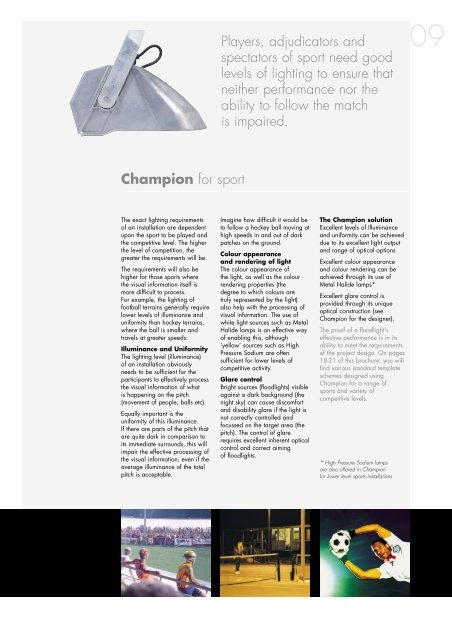
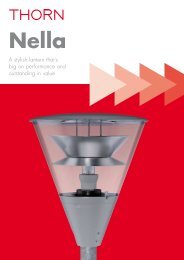
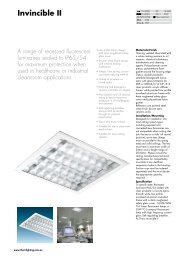
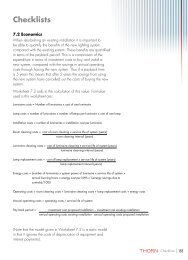
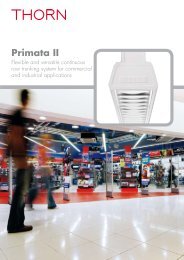
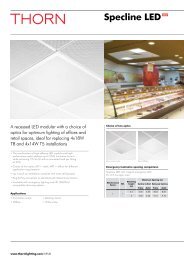

![Produkt brochure [PDF/4MB] - THORN Lighting](https://img.yumpu.com/50705283/1/184x260/produkt-brochure-pdf-4mb-thorn-lighting.jpg?quality=85)
